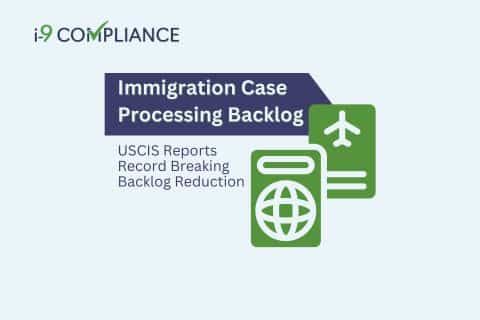USCIS Reports Record Breaking Immigration Case Processing Reduces Backlog

The U.S. Citizenship and Immigration Services (USCIS) has released data for its fiscal year 2023 (FY2023) operations. This data disclosed that the agency processed an unprecedented number of immigration cases during the year. In FY2023, the agency reported that it managed to complete an incredible 10 million immigration cases. This success reduced the agency’s backlog for the first time in more than a decade.
The USCIS Director Ur M Jaddou announced, “I’m so proud of the USCIS workforce and our dedication to fairness, integrity, and respect for all we serve. We’ve completed a record number of cases, responded to emerging crises around the globe with essential humanitarian relief, and applied innovative solutions to improve customer experience and reduce backlogs.”
In FY2023, the USCIS reportedly received over 10.9 million filings. Of this figure, the agency processed and completed over 10 million. Both of these values represent record-breaking numbers for the agency. By processing 10 million cases, the agency successfully reduced the longstanding backlogs by 15%.
The agency commented that the achievement included administering the Oath of Allegiance to over 878,500 new U.S. citizens. This process effectively eliminated the backlog of naturalization applications. By the end of the fiscal year, the median processing time for naturalization applications dropped from 10.5 to 6.1 months. This success significantly reduced the waiting period for those seeking U.S. citizenship.
The USCIS reported similar success for employment-based visas. After coordinating with the Department of State, the agency issued over 192,000 visas. This also marked the second year in succession when the USCIS used all available employment-based visas.
The agency also discussed how it supported U.S. employers and their noncitizen workers. According to the USCIS, they increased the validity period for Employment Authorization Documents (EADs) to five years for adjustment of status applicants. It also removed the biometrics fee and appointment requirement for changes or extensions of status applicants.
For fiscal year 2024, the agency intends to continue building on this progress. The USCIS will also monitor and address existing processing delays. In addition, the agency hopes to maintain the standing 30-day processing time for eligible EAD applications. These applications include those who entered the U.S. after scheduling an appointment through the agency’s app or CHNV processes.
The USCIS’s report marks positive developments that have and may continue to help those hiring noncitizen workers. Interested employers should ensure they prepare to hire these workers. One way is to incorporate an electronic I-9 management system into the hiring process. This tool aids hiring personnel work through the employment eligibility verification (Form I-9) process with new-hires. It offers guidance, convenient digital storage, an optional E-Verify integration, and more.
Automate your employment eligibility verification today with the ensured compliance of I-9 Compliance.